Mary Eaton - The Cook and Housekeeper's Complete and Universal Dictionary; Including a System of Modern Cookery, in all Its Various Branches, Adapted to the Use of Private Families
Здесь есть возможность читать онлайн «Mary Eaton - The Cook and Housekeeper's Complete and Universal Dictionary; Including a System of Modern Cookery, in all Its Various Branches, Adapted to the Use of Private Families» — ознакомительный отрывок электронной книги совершенно бесплатно, а после прочтения отрывка купить полную версию. В некоторых случаях можно слушать аудио, скачать через торрент в формате fb2 и присутствует краткое содержание. Издательство: Иностранный паблик, Жанр: foreign_antique, foreign_prose, на английском языке. Описание произведения, (предисловие) а так же отзывы посетителей доступны на портале библиотеки ЛибКат.
- Название:The Cook and Housekeeper's Complete and Universal Dictionary; Including a System of Modern Cookery, in all Its Various Branches, Adapted to the Use of Private Families
- Автор:
- Издательство:Иностранный паблик
- Жанр:
- Год:неизвестен
- ISBN:нет данных
- Рейтинг книги:5 / 5. Голосов: 1
-
Избранное:Добавить в избранное
- Отзывы:
-
Ваша оценка:
- 100
- 1
- 2
- 3
- 4
- 5
The Cook and Housekeeper's Complete and Universal Dictionary; Including a System of Modern Cookery, in all Its Various Branches, Adapted to the Use of Private Families: краткое содержание, описание и аннотация
Предлагаем к чтению аннотацию, описание, краткое содержание или предисловие (зависит от того, что написал сам автор книги «The Cook and Housekeeper's Complete and Universal Dictionary; Including a System of Modern Cookery, in all Its Various Branches, Adapted to the Use of Private Families»). Если вы не нашли необходимую информацию о книге — напишите в комментариях, мы постараемся отыскать её.
The Cook and Housekeeper's Complete and Universal Dictionary; Including a System of Modern Cookery, in all Its Various Branches, Adapted to the Use of Private Families — читать онлайн ознакомительный отрывок
Ниже представлен текст книги, разбитый по страницам. Система сохранения места последней прочитанной страницы, позволяет с удобством читать онлайн бесплатно книгу «The Cook and Housekeeper's Complete and Universal Dictionary; Including a System of Modern Cookery, in all Its Various Branches, Adapted to the Use of Private Families», без необходимости каждый раз заново искать на чём Вы остановились. Поставьте закладку, и сможете в любой момент перейти на страницу, на которой закончили чтение.
Интервал:
Закладка:
CARRAWAY CAKE. Dry two pounds of good flour, add ten spoonfuls of yeast, and twelve of cream. Wash the salt out of a pound of butter, and rub it into the flour; beat up eight eggs with half the whites, and mix it with the composition already prepared. Work it into a light paste, set it before the fire to rise, incorporate a pound of carraway comfits, and an hour will bake it.
CARRIER SAUCE. Chop six shalots fine, and boil them up with a gill of gravy, a spoonful of vinegar, some pepper and salt. This is used for mutton, and served in a boat.
CARROLE OF RICE. Wash and pick some rice quite clean, boil it five minutes in water, strain and put it into a stewpan, with a bit of butter, a good slice of ham, and an onion. Stew it over a very gentle fire till tender; have ready a mould lined with very thin slices of bacon, mix the yolks of two or three eggs with the rice, and then line the bacon with it about half an inch thick. Put into it a ragout of chicken, rabbit, veal, or of any thing else. Fill up the mould, and cover it close with rice. Bake it in a quick oven an hour, turn it over, and send it to table in a good gravy, or curry sauce.
CARROTS. This root requires a good deal of boiling. When young, wipe off the skin after they are boiled; when old, scrape them first, and boil them with salt meat. Carrots and parsnips should be kept in layers of dry sand for winter use, and not be wholly cleared from the earth. They should be placed separately, with their necks upward, and be drawn out regularly as they stand, without disturbing the middle or the sides.
CARROT PUDDING. Boil a large carrot tender; then bruise it in a marble mortar, and mix with it a spoonful of biscuit powder, or three or four little sweet biscuits without seeds, four yolks and two whites of eggs, a pint of cream either raw or scalded, a little ratifia, a large spoonful of orange or rose-water, a quarter of a nutmeg, and two ounces of sugar. Bake it in a shallow dish lined with paste; turn it out, and dust a little fine sugar over it.
CARROT SOUP. Put some beef bones into a saucepan, with four quarts of the liquor in which a leg of mutton or beef has been boiled, two large onions, a turnip, pepper and salt, and boil them together for three hours. Have ready six large carrots scraped and sliced; strain the soup on them, and stew them till soft enough to pulp through a hair sieve or coarse cloth, with a wooden spoon; but pulp only the red part of the carrot, and not the yellow. The soup should be made the day before, and afterwards boiled with the pulp, to the thickness of peas-soup, with the addition of a little cayenne.

CARVING. In nothing does ceremony more frequently triumph over comfort, than in the administration of 'the honours of the table.' Every one is sufficiently aware that a dinner, to be eaten in perfection, should be taken the very moment it is sent hot to table; yet few persons seem to understand, that he is the best carver who fills the plates of the greatest numbers of guests in the least portion of time, provided it be done with ease and elegance. In a mere family circle, where all cannot and ought not to be choosers, it is far better to fill the plates and send them round, rather than ask each individual what particular part they would prefer; and if in a larger company a similar plan were introduced, it would be attended with many advantages. A dexterous carver, would help half a dozen people in less time than is often wasted in making civil faces to a single guest. He will also cut fair, and observe an equitable distribution of the dainties he is serving out. It would save much time, if poultry, especially large turkeys and geese, were sent to table ready cut up. When a lady presides, the carving knife should be light, of a middling size, and of a fine edge. Strength is less required than address, in the manner of using, it; and to facilitate this, the butcher should be ordered to divide the joints of the bones, especially of the neck, breast, and loin of mutton, lamb, and veal; which may then be easily cut into thin slices attached to the adjoining bones. If the whole of the meat belonging to each bone should be too thick, a small slice may be taken off between every two bones. The more fleshy joints, as fillet of veal, leg or saddle of mutton and beef, are to be helped in thin slices, neatly cut and smooth; observing to let the knife pass down to the bone in the mutton and beef joints. The dish should not be too far off the carver, as it gives an awkward appearance, and makes the task more difficult. In helping fish, take care not to break the flakes; which in cod and very fresh salmon are large, and contribute much to the beauty of its appearance. A fish knife, not being sharp, divides it best on this account. Help a part of the roe, milt or liver, to each person. The heads of carp, part of those of cod and salmon, sounds of cod, and fins of turbot, are likewise esteemed niceties, and are to be attended to accordingly. In cutting up any wild fowl, duck, goose, or turkey, for a large party, if you cut the slices down from pinion to pinion, without making wings, there will be more prime pieces. But that the reader may derive the full advantage of these remarks, we shall descend to particulars, and illustrate the subject with a variety of interesting Plates, which will show at the same time the manner in which game and poultry should be trussed and dished. – Cod's head. Fish in general requires very little carving, the fleshy parts being those principally esteemed. A cod's head and shoulders, when in season, and properly boiled, is a very genteel and handsome dish. When cut, it should be done with a fish trowel, and the parts about the backbone on the shoulders are the firmest and the best. Take off a piece quite down to the bone, in the direction a , b , c , d , putting in the spoon at a , c , and with each slice of fish give a piece of the sound, which lies underneath the backbone and lines it, the meat of which is thin, and a little darker coloured than the body of the fish itself. This may be got by passing a knife or spoon underneath, in the direction of d , f . About the head are many delicate parts, and a great deal of the jelly kind. The jelly part lies about the jaw, bones, and the firm parts within the head. Some are fond of the palate, and others the tongue, which likewise may be got by putting a spoon into the mouth. – Edge bone of Beef. Cut off a slice an inch thick all the length from a to b , in the figure opposite, and then help. The soft fat which resembles marrow, lies at the back of the bone, below c; the firm fat must be cut in horizontal slices at the edge of the meat d . It is proper to ask which is preferred, as tastes differ. The skewer that keeps the meat properly together when boiling is here shewn at a . This should be drawn out before it is served up; or, if it is necessary to leave the skewer in, put a silver one. – Sirloin of Beef may be begun either at the end, or by cutting into the middle. It is usual to enquire whether the outside or the inside is preferred. For the outside, the slice should be cut down to the bones; and the same with every following helping. Slice the inside likewise, and give with each piece some of the soft fat. The inside done as follows eats excellently. Have ready some shalot vinegar boiling hot: mince the meat large, and a good deal of the fat; sprinkle it with salt, and pour the shalot vinegar and the gravy on it. Help with a spoon, as quickly as possible, on hot plates. – Round or buttock of Beef is cut in the same way as fillet of veal, in the next article. It should be kept even all over. When helping the fat, observe not to hack it, but cut it smooth. A deep slice should be cut off the beef before you begin to help, as directed above for the edge-bone. – Fillet of Veal. In an ox, this part is round of beef. Ask whether the brown outside be liked, otherwise help the next slice. The bone is taken out, and the meat tied close, before dressing, which makes the fillet very solid. It should be cut thin, and very smooth. A stuffing is put into the flap, which completely covers it; you must cut deep into this, and help a thin slice, as likewise of fat. From carelessness in not covering the latter with paper, it is sometimes dried up, to the great disappointment of the carver. – Breast of Veal. One part, called the brisket, is thick and gristly; put the knife about four inches from the edge of this, and cut through it, which will separate the ribs from the brisket. – Calf's Head has a great deal of meat upon it, if properly managed. Cut slices from a to b , letting the knife go close to the bone. In the fleshy part, at the neck end c , there lies the throat sweetbread, which you should help a slice of from c to d with the other part. Many like the eye, which must be cut out with the point of a knife, and divided in two. If the jaw-bone be taken off, there will be found some fine lean. Under the head is the palate, which is reckoned a nicety; the lady of the house should be acquainted with all things that are thought so, that she may distribute them among her guests. – Shoulder of Mutton. This is a very good joint, and by many preferred to the leg; it being very full of gravy, if properly roasted, and produces many nice bits. The figure represents it as laid in the dish with its back uppermost. When it is first cut, it should be in the hollow part of it, in the direction of a , b , and the knife should be passed deep to the bone. The prime part of the fat lies on the outer edge, and is to be cut out in thin slices in the direction e . If many are at table, and the hollow part cut in the line a , b , is eaten, some very good and delicate slices may be cut out on each side the ridge of the blade-bone, in the direction c , d . The line between these two dotted lines, is that in the direction of which the edge or ridge of the blade-bone lies, and cannot be cut across. – Leg of Mutton. A leg of wether mutton, which is the best flavoured, may be known by a round lump of fat at the edge of the broadest part, as at a . The best part is in the midway, at b , between the knuckle and further end. Begin to help there, by cutting thin deep slices to c . If the outside is not fat enough, help some from the side of the broad end in slices from e to f . This part is most juicy; but many prefer the knuckle, which in fine mutton will be very tender though dry. There are very fine slices on the back of the leg: turn it up, and cut the broad end, not in the direction you did the other side, but longways. To cut out the cramp bone, take hold of the shank with your left hand, and cut down to the thigh bone at d; then pass the knife under the cramp bone in the direction, d , g . – Fore quarter of Lamb. Separate the shoulder from the scoven, which is the breast and ribs, by passing the knife under in the direction of a , b , c , d; keeping it towards you horizontally, to prevent cutting the meat too much off the bones. If grass lamb, the shoulder being large, put it into another dish. Squeeze the juice of half a Seville orange or lemon on the other part, and sprinkle a little salt and pepper. Then separate the gristly part from the ribs in the line e , c; and help either from that or from the ribs, as may be chosen. – Haunch of Venison. Cut down to the bone in the line a , b , c , to let out the gravy. Then turn the broad end of the haunch toward you, put in the knife at b , and cut as deep as you can to the end of the haunch d; then help in thin slices, observing to give some fat to each person. There is more fat, which is a favourite part, on the left side of c and d than on the other: and those who help must take care to proportion it, as likewise the gravy, according to the number of the company. – Haunch of Mutton is the leg and part of the loin, cut so as to resemble a haunch of venison, and is to be helped at table in the same manner. – Saddle of Mutton. Cut long thin slices from the tail to the end, beginning close to the back bone. If a large joint, the slice may be divided. Cut some fat from the sides. – Ham may be cut three ways. The common method is, to begin in the middle, by long slices from a to b , from the centre through the thick fat. This brings to the prime at first, which is likewise accomplished by cutting a small round hole on the top of the ham, as at c , and with a sharp knife enlarging that by cutting successive thin circles: this preserves the gravy, and keeps the meat moist. The last and most saving way is, to begin at the hock end, which many are most fond of, and proceed onwards. Ham that is used for pies, &c. should be cut from the under side, first taking off a thick slice. – Sucking Pig. The cook usually divides the body before it is sent to table, and garnishes the dish with the jaws and ears. The first thing is, to separate a shoulder from the carcase on one side, and then the leg, according to the direction given by the dotted line a , b , c . The ribs are then to be divided into about two helpings, and an ear or jaw presented with them, and plenty of sauce. The joints may either be divided into two each, or pieces may be cut from them. The ribs are reckoned the finest part, but some people prefer the neck end, between the shoulders. – Goose. Cut off the apron in the circular line a , b , c , and pour into the body a glass of port wine, and a large tea-spoonful of mustard, first mixed at the sideboard. Turn the neck end of the goose towards you, and cut the whole breast in long slices from one wing to another; but only remove them as you help each person, unless the company is so large as to require the legs likewise. This way gives more prime bits than by making wings. Take off the leg, by putting the fork into the small end of the bone, pressing it to the body; and having passed the knife at d , turn the leg back, and if a young bird, it will easily separate. To take off the wing, put your fork into the small end of the pinion, and press it close to the body; then put in the knife at d , and divide the joint, taking it down in the direction d , e . Nothing but practice will enable people to hit the joint dexterously. When the leg and wing of one side are done, go on to the other; but it is not often necessary to cut up the whole goose, unless the company be very large. There are two side bones by the wing, which may be cut off; as likewise the back and lower side bones: but the best pieces are the breast and the thighs, after being divided from the drum-sticks. – Hare. The best way of cutting it up is, to put the point of the knife under the shoulder at a , and so cut all the way down to the rump, on one side of the back-bone, in the line a , b . Do the same on the other side, so that the whole hare will be divided into three parts. Cut the back into four, which with the legs is the part most esteemed. The shoulder must be cut off in a circular line, as c , d , a . Lay the pieces neatly on the dish as you cut them; and then help the company, giving some pudding and gravy to every person. This way can only be practised when the hare is young. If old, do not divide it down, which will require a strong arm: but put the knife between the leg and back, and give it a little turn inwards at the joint; which you must endeavour to hit, and not to break by force. When both legs are taken off, there is a fine collop on each side the back; then divide the back into as many pieces as you please, and take of the shoulders, which are by many preferred, and are called the sportman's pieces. When every one is helped, cut off the head; put your knife between the upper and lower jaw, and divide them, which will enable you to lay the upper one flat on your plate; then put the point of the knife into the centre, and cut the head into two. The ears and brains may be helped then to those who like them. – Carve Rabbits as directed the latter way for hare; cutting the back into two pieces, which with the legs are the prime. – A Fowl. The legs of a boiled fowl are bent inwards, and tucked into the belly; but before it is served, the skewers are to be removed. Lay the fowl on your plate; and place the joints, as cut off, on the dish. Take the wing off in the direction of a to b , in the annexed engraving, only dividing the joint with your knife; and then with your fork lift up the pinion, and draw the wing towards the legs, and the muscles will separate in a more complete form than if cut. Slip the knife between the leg and body, and cut to the bone; then with the fork turn the leg back, and the joint will give way if the bird is not old. When the four quarters are thus removed, take off the merrythought from a , and the neck bones; these last by putting in the knife at c , and pressing it under the long broad part of the bone in the line c , b . Then lift it up, and break it off from the part that sticks to the breast. The next thing is, to divide the breast from the carcase, by cutting through the tender ribs close to the breast, quite down to the tail. Then lay the back upwards, put your knife into the bone half-way from the neck to the rump, and on raising the lower end it will separate readily. Turn the rump from you, and very neatly take off the two sidebones, and the whole will be done. As each part is taken off, it should be turned neatly on the dish, and care should be taken that what is left goes properly from table. The breast and wings are looked upon as the best parts, but the legs are most juicy in young fowls. After all, more advantage will be gained by observing those who carve well, and a little practice, than by any written directions whatever. – A Pheasant. The bird in the annexed engraving is as trussed for the spit, with its head under one of its wings. When the skewers are taken out, and the bird served, the following is the way to carve it. Fix a fork in the centre of the breast; slice it down in the line a , b; take off the leg on one side in the dotted line b , d; then cut off the wing on the same side in the line c , d . Separate the leg and wing on the other side, and then cut off the slices of breast you divided before. Be careful how you take off the wings; for if you should cut too near the neck, as at g , you will hit on the neck-bone, from which the wing must be separated. Cut off the merrythought in the line f , g , by passing the knife under it towards the neck. Cut the other parts as in a fowl. The breast, wings, and merrythought, are the most esteemed; but the leg has a higher flavour. – Partridge. The partridge is here represented as just taken from the spit; but before it is served up, the skewers must be withdrawn. It is cut up in the same manner as a fowl. The wings must be taken off in the line a , b , and the merrythought in the line c , d . The prime parts of a partridge are the wings, breast, and merrythought; but the bird being small, the two latter are not often divided. The wing is considered as the best, and the tip of it reckoned the most delicate morsel of the whole. – Pigeons. Cut them in half, either from top to bottom or across. The lower part is generally thought the best; but the fairest way is to cut from the neck to a , rather than from c to b , by a , which is the most fashionable. The figure represents the back of the pigeon; and the direction of the knife is in the line c , b , by a , if done the last way.
Читать дальшеИнтервал:
Закладка:
Похожие книги на «The Cook and Housekeeper's Complete and Universal Dictionary; Including a System of Modern Cookery, in all Its Various Branches, Adapted to the Use of Private Families»
Представляем Вашему вниманию похожие книги на «The Cook and Housekeeper's Complete and Universal Dictionary; Including a System of Modern Cookery, in all Its Various Branches, Adapted to the Use of Private Families» списком для выбора. Мы отобрали схожую по названию и смыслу литературу в надежде предоставить читателям больше вариантов отыскать новые, интересные, ещё непрочитанные произведения.
Обсуждение, отзывы о книге «The Cook and Housekeeper's Complete and Universal Dictionary; Including a System of Modern Cookery, in all Its Various Branches, Adapted to the Use of Private Families» и просто собственные мнения читателей. Оставьте ваши комментарии, напишите, что Вы думаете о произведении, его смысле или главных героях. Укажите что конкретно понравилось, а что нет, и почему Вы так считаете.
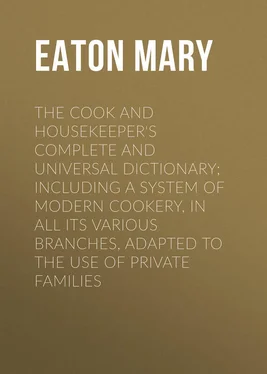
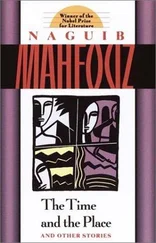
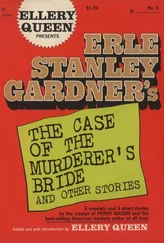

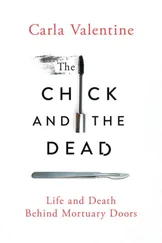

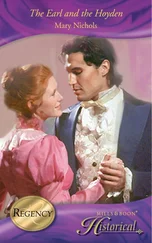
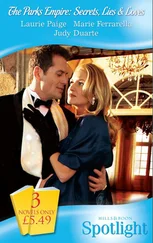




![John Bruce - The Lettsomian Lectures on Diseases and Disorders of the Heart and Arteries in Middle and Advanced Life [1900-1901]](/books/749387/john-bruce-the-lettsomian-lectures-on-diseases-and-disorders-of-the-heart-and-arteries-in-middle-and-advanced-life-1900-1901-thumb.webp)